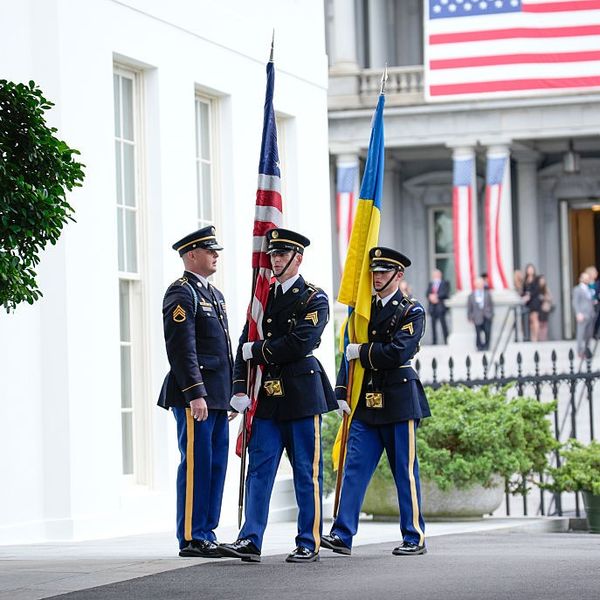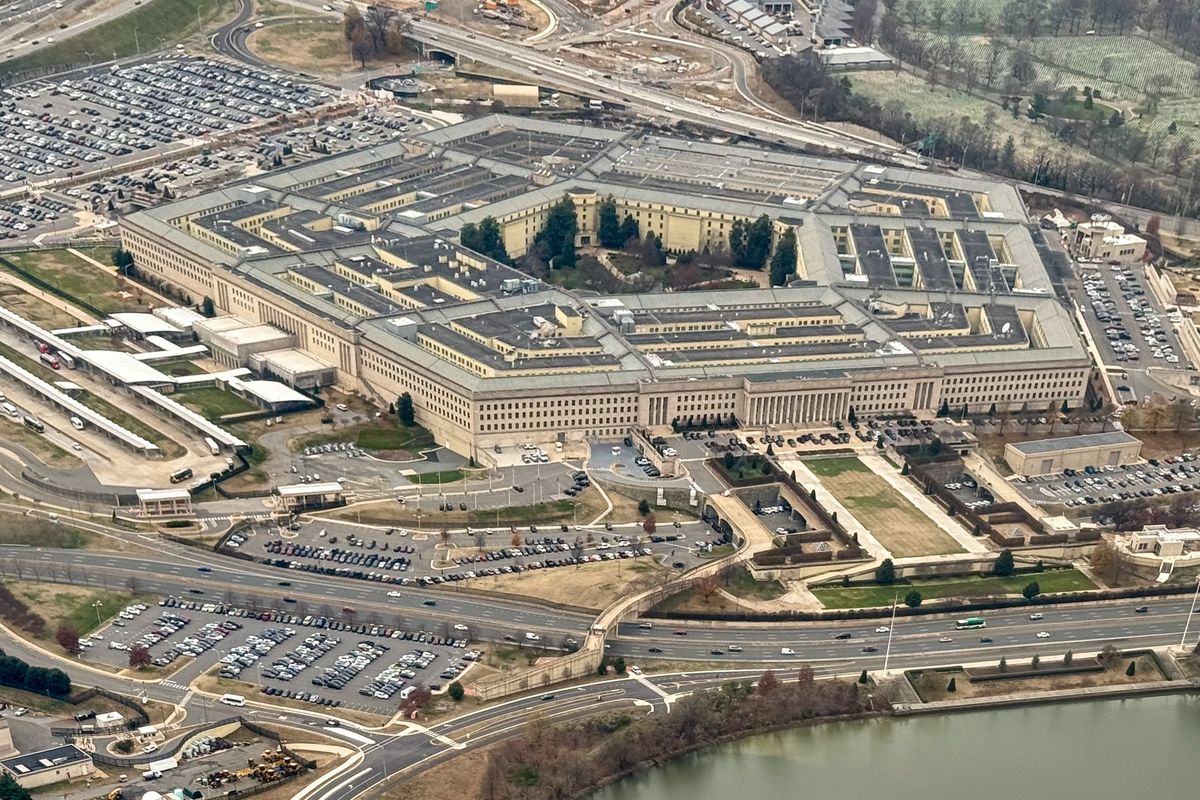OPINION — A rearmed Japan provides the U.S. with another strong Indo-Pacific ally which should calm down what I believe are exaggerated fears of China using military force to seize Taiwan.
Japan’s decision last month to spend $320 billion on defense over the next five years, almost doubling its former planned defense spending, and spending two percent of GDP annually thereafter, will put it near $80 billion annually by 2027. That would place it third in world spending, behind only the U.S. and China.
More important is Japan’s decision to develop counterstrike or offensive capabilities, illustrated by the reported plan to purchase $1.58 billion of U.S. long-range [up to 1,000 miles] Tomahawk cruise missiles for deployment on Japanese Aegis destroyers in 2026 and 2027. Also, in Japan’s proposed budget is a plan to purchase American-made Joint Air-to-Surface Standoff Missiles with a range of about 560 miles for its upgraded F-15s.
Japan also has a capable defense industry as illustrated by a December agreement with the United Kingdom and Italy to develop jointly - a next-generation, F-X fighter aircraft by 2035. The proposed stealthy, twin-engine airplane project will be led by Japan’s Mitsubishi Heavy Industries and Britain’s BAE Systems. Japan is also developing its own hypersonic weapons as well as unmanned and multi-role military vehicles.
In the production area, among last week’s U.S.–Japan agreements, was a bilateral Memorandum of Understanding in which both the Pentagon and Japan’s Ministry of Defense commit to promoting U.S.-Japanese collaboration on research projects in emerging defense technologies such as high-power microwaves, autonomous systems, and counter-hypersonics.
There was also movement related to nuclear weapons.
In January 11, the U.S.-Japan Security Consultative Committee, Secretary of State Anthony Blinken, Secretary of Defense Lloyd Austin, Minister for Foreign Affairs Yoshimasa Hayashi, and Minister of Defense Yasukazu Hamada held what was described as “an in-depth discussion on U.S. extended deterrence for Japan, as well as on the recently released U.S. Nuclear Posture Review,” according to a Defense Department press release.
During that discussion, “The United States restated its unwavering commitment to the defense of Japan under Article V of the Japan-U.S. Security Treaty, using its full range of capabilities, including nuclear,” according to the release.
Subscriber+Members have a higher level of access to Cipher Brief Expert Perspectives and get exclusive access to The Dead Drop, the best national security gossip publication, if we do say so ourselves. Find out what you’re missing. Upgrade your access to Subscriber+ now.
In the past, nuclear weapons have been a super-sensitive subject in Japan. However, after Russia’s invasion of Ukraine in late February 2022, the late former-Prime Minister Shinzo Abe, who was instrumental in promoting a rearmed Japan, said that Japan should break with the past and debate possible “nuclear-sharing” with the U.S., similar to that of NATO countries.
Without disclosing the outcome of last week’s talks, the January 11 press release said the four officials “reaffirmed the critical importance of ensuring U.S. extended nuclear deterrence remains credible and resilient, bolstered by Japan’s capabilities.”
That latter phrase would indicate some new role for the Japanese when it comes to possible U.S. nuclear weapons use – a reaction bolstered by the statement that both countries plan a deeper “Extended Deterrence Dialogue” at future senior level meetings.
U.S.-Japanese officials did, however, agree to update Article V to include a possible attack "to, from or within space" on a Japanese or U.S. target. They added, however, “a decision as to when such an attack would lead to an invocation of Article V would be made on a case-by-case basis, and through close consultations between Japan and the United States, as would be the case for any other threat.”
Back in 2019, the U.S. and Japan included cyber as a military domain where attacks also would be covered under Article V.
Another less publicized outcome from the talks came in the Joint Statement of President Joe Biden and Japanese Prime Minister Fumio Kishida released last Friday. It was a re-affirmation that America’s Article V treaty commitment to defend Japan “using its full range of capabilities, including nuclear…applies to the Senkaku Islands.”
The Senkaku Islands are five uninhabited, rocky islets 87 miles northeast of Taiwan and 205 miles southeast of mainland China. After World War II, the Senkakus were administered, along with the Ryukyu Islands, by the U.S. until 1972, at which time they were returned to Japan.
However, China considers the Senkakus to be part of Taiwan, over which it claims sovereignty. That’s based on China’s control over the islands from the 14th Century and the claim they are part of Taiwan, despite the terms of an 1895 treaty ending the Sino-Japanese war which gave the Senkakus to Japan.
Get your 10-minute national security daily open source brief by signing up for The Cipher Brief’s Open Source Report Daily Newsletter or by listening to The Cipher Brief’s Open Source Report Podcast with Suzanne Kelly and Brad Christian, wherever you listen to podcasts.
Since 2012, “China has increased its deployments of maritime law enforcement and naval ships near the [Senkaku] islands and increased military patrol flights in the East China Sea, prompting reciprocal responses from the Japanese Coast Guard and Japanese Air Self Defense Force,” according to a March 2021 Congressional Research Service report.
In January 2021, the Beijing government passed a law that permitted the Chinese Coast Guard to forcibly attack foreign vessels they believe are carrying out economic activities in waters claimed by China. The Japanese responded by giving their own Coast Guard authority to fire when foreign vessels attempted to land persons on any of the Senkaku Islands.
In April 2021, at a meeting in Washington, President Biden and then-Japanese Prime Minister Suga Yoshihide issued a statement that referred to Article V of the Japan-U.S. Security Treaty and said, “Together, we oppose any unilateral action that seeks to undermine Japan’s administration of the Senkaku Islands.”
Beyond reinforcing Japanese defense of the Senkakus, last week’s meetings made clear that the U.S. and Japan plan to increase bilateral military exercises and training in and around those islands. “They also committed to expand joint/shared use of U.S. and Japanese facilities and to increase bilateral exercises and training in areas including Japan's Southwest Islands,” as stated in a Defense Department release.
There are approximately 55,000 American service members based in Japan today, located primarily on seven bases along with dozens of smaller installations.
The U.S. Navy has about 20,000 service members at three major bases on mainland Japan: Yokosuka, Atsugi, and Sasebo. Yokosuka is the largest U.S. Navy base in the world and has the aircraft carrier “USS Ronald Reagan,” the Seventh Fleet Command ship “USS Blue Ridge,” plus other cruisers and destroyers that are part of Carrier Strike Group Five.
The Fifth Air Force, with headquarters at Yokota Air Base, has 15,000 Airmen and civilians located on three main air bases – Kadena Air Base, on Okinawa; the 35th Fighter Wing at Japan’s Misawa Air Base on the northern island of Honshu; and the 374th Airlift Wing at Yokota Air Base in a Tokyo suburb.
The Misawa Air Base is interesting in that it has both U.S. Air Force and Navy as well as Japanese Self Defense Force aircraft on the nation’s most northern major island, closest to North Korea. The U.S. Navy flies patrol, reconnaissance and electronic collection aircraft from Misawa while the Japanese fly three unmanned Global Hawk surveillance drones that arrived last March.
The Global Hawks are there to “conduct information gathering in areas relatively remote from Japan, as well as persistent airborne monitoring during situations with heightened tensions,” Japan’s Ministry of Defense said when the drones first arrived.
Not too much later, in October 2022, U.S. Pacific Air Forces deployed MQ-9 Reaper surveillance drones to the Japanese Maritime Self-Defense Force’s Kanoya Air Base, which is located on Japan’s most southern major island.
The unmanned Reapers will be used for surveillance, reconnaissance and intelligence-gathering activities near Japan's southwestern island chains, including the Senkakus. An estimated 150 to 200 U.S. military personnel will be stationed in Kanoya to provide operational support.
These new surveillance assets will be run in coordination with the newly established U.S.-Japan Bilateral Intelligence Analysis Cell (BIAC) at Yokota Air Base, set up to jointly analyze information acquired by Japanese and U.S. intelligence, surveillance and reconnaissance assets. The Japanese Defense Ministry said a team of 30 Japanese and U.S. intelligence analysts would work on the project.
Some 18,000 Marines are stationed in Japan, most of them on Okinawa. However, changes in their deployments were outlined by the Marines months ago, but discussed and agreed to by the Japanese during last week’s meetings. The plan is to change the Okinawa-based 12th Marine Regiment, which is now an artillery unit with 3,400 personnel, into a 12th Marine Littoral Regiment (MLR) which would have 2,000, but with a different makeup and different equipment. Plans called for the 12th Marine Littoral Regiment to be in Japan by 2025, with advanced intelligence, surveillance, and reconnaissance, such as the MQ-9A Reaper, anti-ship, long-range fires, and long-range, unmanned transportation capabilities.
The MLR would also include smaller units that would have 75 to 100 Marines as an Expeditionary Advanced Base detachment that could be prepared to deploy to small island chains. The MLRs would be built for small tasks with a signature that it is not easily detectable, but power enough, that an enemy has to deal with it.
U.S. Defense Secretary Lloyd Austin told reporters, “We're replacing an artillery regiment with an outfit that's more lethal, more agile, more capable.”
Another element agreed to last week, was for Japan “to establish a permanent joint headquarters” so that there could be “more effective Alliance command and control relationships to enhance interoperability and responsiveness.”
As impressive, was the outcome of the talks in terms of promised military capabilities to meet any Chinese threat. Austin insisted, “It's absolutely critical that leaders of great powers maintain open lines of communication and be able to talk with each other. In that way, we can avoid miscalculation wherever possible. And you see us continuing to try to ensure that we keep those lines open, and I would invite my colleagues in China to meet us halfway there.”
And although Austin said, “What we're seeing recently, is some very provocative behavior on the part of China's forces,” he added, “whether or not that means that an invasion is imminent, I seriously doubt that.”
Let us hope open communications prevent miscalculations in both the short and long terms.
Read more expert-driven national security insights, perspective and analysis in The Cipher Brief













